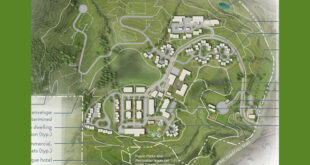“This is new territory for us”
by Kristy Acuff
The Colorado State Forest Service presented its 2017 Report on the Health of Colorado’s Forests to the Gunnison Board of County Commissioners and the message was: Get ready for beetle migration and increased tree infestation.
“It’s working its way up to Crested Butte from Taylor Park,” said Sam Pankratz, assistant district forester for the state forest service. “For the past five consecutive years, it’s been our largest tree mortality agent concern for Gunnison County.”
According to Pankratz, there is no silver bullet to eradicate the beetle short of widespread insecticide use. “We’re not going to come in and tell you to start spraying your forests with chemicals,” said Pankratz. “And as far as cold temperatures killing the beetles? That is basically a myth because research says you need a week of daytime temperatures at 60 degrees below zero and we don’t have that.”
Other deterrents for beetles include pheromone treatments that hang from trees and essentially send the message that “This tree is occupied,” thus forcing invading beetles to go elsewhere. “But that is a Band-Aid treatment,” said Pankratz. “It can save individual trees if you get the right pheromone mixture, but it is not treating the underlying forest condition. But landowners need to do their research and make sure to get the right pheromone mixture for the correct beetle/tree combination.”
According to Pankratz, his office has filled orders for pheromone treatments for more than 150 landowners in the Gunnison area. Overall in 2017 more than 13,000 pheromone packets were deployed in Gunnison and Hinsdale counties over 650 acres. It costs roughly $50 to $75 per acre to treat trees with the pheromone packets.
A warming climate across the state is one factor that has contributed to large-scale insect impacts in state forests. The statewide annual temperature was 3.2 degrees Fahrenheit higher than average in 2017, continuing a trend of warming temperatures.
The spruce beetle is a native bark beetle that infests high-elevation Engelmann spruce and Colorado blue spruce trees. Initially, the beetles infest fallen trees, where a single female deposits between 70 and 90 eggs. The hatched beetles emerge in July and then fly or are carried by winds to infest nearby areas. 7,000 to 9,000 mature beetles can emerge from a single infested tree, killing the tree in the process. Woodpeckers are the most common predator for the bark beetles.
“If you have fallen or downed trees on your property, that is the brooding habitat for the beetles,” says Pankratz. “One of our challenges as a forest service is to work to remove fallen trees and remove the standing dead trees that have been infested to try to slow down the beetle epidemic.”
In addition to a warming climate, Pankratz says a history of wildfire suppression has created a big monoculture of large older trees that some bark beetles prefer. “If we don’t let the forests burn, the beetles will do it for us, but I am optimistic,” said Pankratz during a subsequent interview. “Mother Nature is pretty resilient.”
“What is the habitat once the beetle epidemic has passed through an area?” asked commissioner John Messner.
“This is new territory for us,” said Pankratz. “What are we going to see emerge on the landscape once the beetles have passed through? Will we see a re-emergence of spruce-fir forests or will we see sagebrush landscape transition up in elevation? We are really not sure. It is climate dependent, among other factors.”
The silver lining, if there is one, could be in the potential to harvest the standing dead trees that are sure to come. In Colorado there are 100 sawmills according to the report, and an estimated one-third of them use beetle-killed trees as part of their wood supply but the state forest service says more are needed.
According to the report, “The state still lacks the wood utilization capacity necessary to fully address the broad scope of forest management needs.” In other words, the state needs more sawmills.
 The Crested Butte News Serving the Gunnison Valley since 1999
The Crested Butte News Serving the Gunnison Valley since 1999


